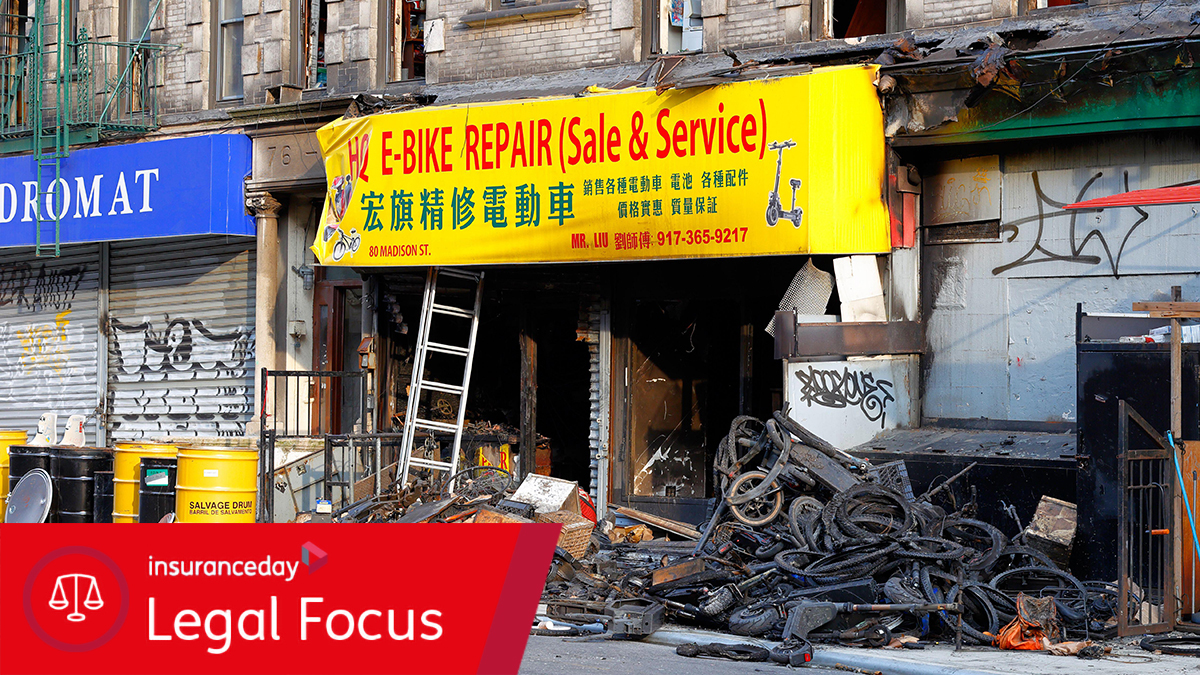Identifying marine risks in the transition to a decarbonised future
Developing necessary rules, standards and guidelines in relation to new fuels in shipping will be a challenge for regulators
Re/insurers are facing the prospect of their policyholders being pursued by plaintiffs in numerous protracted, complex and expensive pieces of litigation
The International Maritime Organization (IMO) enhanced its strategy of reducing the shipping industry’s greenhouse gas (GHG) emissions in July 2023.
According to the “2023 IMO Strategy on Reduction of GHG Emissions from Ships”, the industry needs to strive to reduce total GHG emissions by 30% by 2030, 80% GHG reductions by 2040 and to reach the target of net-zero GHG emissions by or around 2050.
Meeting these global decarbonisation goals is a significant challenge. Alternative energy sources have cost, availability, storage and environmental concerns that will directly impact the industry and need to be addressed.
Vessels
The decarbonisation of shipping will result in alterations to the vessels themselves. For example, it is likely vessels will grow in size, as larger ships consume less fuel per container and therefore are more environmentally friendly.
As ships grow larger, cargo accumulations and exposures will increase. This will lead to an increase in salvage costs as fewer ports and shipyards are capable of repairing and servicing larger containerships. There is also a greater risk of port blockages as a result of the increased size of vessels, as seen in March 2021 when Ever Given blocked the Suez Canal for six days.
It will be necessary to retrofit fleets to use conventional fuels and adopt different operational practices to improve their efficiency. This will create challenges relating to defining and applying standards for new fuels, as well as identifying the stages at which vessels are ready to use them.
Cargo
Another major concern is the potential safety risks posed by alternative fuel technologies. One example of this is fire and explosion hazards when transporting electric vehicles (EVs) containing lithium-ion batteries.
As part of the wider global efforts to reduce carbon emissions, more and more EVs are being transported by sea. The emerging risk of fires on car carriers has been highlighted by recent losses such as MV Felicity Ace, Grande Costa D’Avorio and Fremantle Highway.
Although the exact cause of these fires is unknown, lithium-ion batteries in EVs on Felicity Ace ignited and made it impossible to contain the fire. All crew members abandoned the ship and the fire continued to burn until the ship sank on March 1, 2022, two weeks after the initial blaze started.
The risk of such fires originates from the specific design of the batteries within EVs. A lithium-ion battery provides power through the movement of ions between two electrodes immersed in a liquid electrolyte, which can be highly volatile and flammable at high temperatures.
Physical contact between these two electrodes is prevented by a porous plastic separator. If this separator gets damaged and the electrodes touch one another, an electrical short circuit can occur, which will generate heat and gases inside the cells of the battery. The rising temperature can result in a chain reaction, potentially resulting in fire or explosion.
Common causes of the failure of the separator are manufacturing defects, physical damage or internal electrical failure caused by overcharging, overdischarging or short circuiting.
Electrochemical fires start and intensify quickly and fixed firefighting systems on car carriers are often not capable of bringing such fires under control. In many cases the initial fire can be extinguished only for a secondary fire to reignite, since damage to the battery leaves it with a potential to continue to self-heat. The reignition may not happen for several hours or even days later and the ship may then be limited in its ability to fight a secondary fire.
Even though modern car carriers are now capable of carrying upwards of 6,000 vessels a voyage, at present there is no systemic approach to storing and transporting EVs.
In response, the suggestion has been put forward that all vehicles could be loaded on to the bottom deck of a vessel, which can then be sealed and intentionally flooded in the event of a fire (potentially saving the vessel from sinking). Beyond this, risk mitigation measures are likely to include better training for crew members on electrochemical fires and improving the labelling of EVs to help crew members identify them.
To provide early detection of lithium-ion battery problems, some operators are investigating the use of gas detectors that can identify the specific gases produced by these batteries, as well as thermal cameras that can monitor temperatures during loading and throughout the the voyage.
Regulation and climate litigation
A growing challenge for regulators across the globe is the need to develop necessary rules, standards and guidelines in relation to new fuels in shipping. The development and implementation of international regulations is a complex process, one that is likely to be exacerbated by the increasing volume and scope of climate change litigation, which will also affect the shipping industry.
Such an impact has already been seen in the oil and gas industry. For example, on April 24 the US Supreme Court declined to consider five climate change-related tort claims despite the defendants – all fossil fuel companies, including Exxon Mobil, Suncor Energy and Chevron Corp – arguing these should be heard in federal courts, rather than at the state level.
The position the Supreme Court has assumed has significant ramifications for climate change litigation, since state courts are generally considered to be more favourable to plaintiffs than federal courts. It also makes clear local bodies – for example, municipalities – can pursue global firms at a regional level for regional alleged environmental harm.
Insurers and reinsurers are therefore now facing the prospect of their policyholders being pursued by plaintiffs in numerous protracted, complex and expensive pieces of litigation. With regards to the shipping industry, similar litigation may arise if a vessel is present in a jurisdiction around the world which allows local court proceedings to be initiated.
Shipping companies will therefore need to be conscious of their potential legal obligations to abide by new regulatory standards, since failing to do so could result in climate change-associated litigation that resembles the cases affecting the oil and gas industry.
Many other factors could lead to an increase in climate litigation in the shipping industry, including technical disputes – such as performance issues from retrofits or bunker disputes – or the contractual implications of operational efficiency clauses.
In a future with increased regulations and more transparent sustainability reporting there could also be a rise in greenwashing disputes predicated on the specific choices made in relation to fuel and technology intended to meet decarbonisation obligations.
There is the possibility shareholders could initiate actions against a company for failing to decarbonise, which potentially could affect the value of the company.
Mehmet Shukri is deputy head of claims and client services and Sharon Stewart is head of protection and indemnity claims at Aon Reinsurance Solutions
This article does not constitute any form of legal, regulatory, accounting, taxation or other specialist advice. It is recommended the reader consult with its professional advisers, including legal counsel, to further consider some of the implications of the discussion above.


